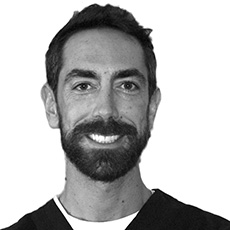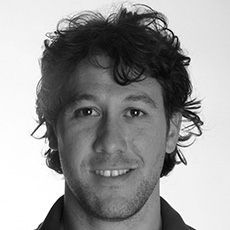
English Lectures


"Simplexidad" en Odontología Adhesiva
“Simplexity” in Adhesive Dentistry
The guidelines of modern restorative dentistry are adhesion and minimum invasiveness.
Composite materials are now leading on the market as a permanent and universal restoration solution: there is no treatment planning which does not include the use of composite materials as for sealing, anterior or posterior restoration or prosthetic crown support.
The perfect knowledge of the advantages and limits of these materials is fundamental for all dentists: a superficial approach to the use of composites may lead to failure and very long chair-work times.
Rules changed with new materials and finally we have the possibility to do difficult things in a very simple way.
“Simplexity” is the new trend.
To know composite materials, nowadays more than ever, means to understand their practical application, to choose the ideal material on the market under the mechanical and aesthetic point of view, to understand when to choose indirect rather than direct technique, to evaluate the use of composites not only in the conservative field, but also in the prosthetic one, both for provisional and permanent solutions.
All in all, it means to properly plan the patient’s treatment, focusing on the quality of its final result and the working time to reach it. With these clear indications in mind, the dilemma of whether to use composites or ceramics is no longer an antagonistic choice but rather the two materials represent integrable solutions, a choice which can be used in harmony, even in the same mouth. Therefore, clinicians now have the possibility of optimising to the maximum the advantages which these materials bring to the profession.

“Global Diagnosis” – A New Vision of Dental Diagnosis and Treatment Planning
With the increased emphasis on interdisciplinary treatment in recent years, the deficiencies associated with traditional methods of diagnosis and treatment planning have become more evident and problematic. Historically, the treatment plan was primarily dictated by information provided by study casts which were mounted on a sophisticated articulator in centric relation. With the advent and common usage of these new treatment modalities, the historical method of diagnosis and treatment planning is no longer adequately serving our profession. It is the purpose of this course to provide a systematic approach to diagnosis and treatment planning the complex interdisciplinary dental patient with a common language that may be used by the orthodontist, periodontist, and oral and maxillofacial surgeon, as well as the restorative dentist. The four Global diagnoses which dictate all interdisciplinary treatment planning will be defined. A set of questions will then be presented which will aid the interdisciplinary team in the diagnosis and treatment planning of the complex dental patient.
Learning Objectives
Upon completion of this course the participant will be able to:
1. Describe 4 Global Diagnoses
2. Communicate with the interdisciplinary team

HANDS ON
In the Hands On section, the speakers will perform a practical demonstration on the management of a real case to analyse together with the participants all the key steps of their working philosophy: from the initial impressions to the treatment plan setting, from the articulator setting through the use of the facial bow until the choice of the definitive material. The most important aspects will be highlighted, to follow a codified method such as "Speed Up Therapy”, through working models, wax ups, transfer indexes, aesthetic and functional mock ups, making these procedures, based on a gnathological rationale, representing the foundations of this approach. The success key in these treatment plans is represented by the Prosthetic Team.
Program
Speed Up Therapy Concept
Preliminary steps: Impressions and technique
Model development: Technique and advantages
Articulator setting with anatomical facial bow
Model duplication technique and cross mounting
Wax Up Technique
Considerations: Case planning
Wax project transfer techniques: Prototype or silicone keys?
Adhesive procedures: Ceramic - Composite cementation protocols
The best articulator in the world: The patient
Re-mounting in the articulator
Analysis of materials according to the thicknesses
Press-ON Technique
Zirconia, Lithium Disilicate, Feldspathic Ceramics, Composite, Hybrid Ceramics
Implants
Alternative solutions

HANDS ON
In the Hands On section, the speakers will perform a practical demonstration on the management of a real case to analyse together with the participants all the key steps of their working philosophy: from the initial impressions to the treatment plan setting, from the articulator setting through the use of the facial bow until the choice of the definitive material. The most important aspects will be highlighted, to follow a codified method such as "Speed Up Therapy”, through working models, wax ups, transfer indexes, aesthetic and functional mock ups, making these procedures, based on a gnathological rationale, representing the foundations of this approach. The success key in these treatment plans is represented by the Prosthetic Team.
Program
Speed Up Therapy Concept
Preliminary steps: Impressions and technique
Model development: Technique and advantages
Articulator setting with anatomical facial bow
Model duplication technique and cross mounting
Wax Up Technique
Considerations: Case planning
Wax project transfer techniques: Prototype or silicone keys?
Adhesive procedures: Ceramic - Composite cementation protocols
The best articulator in the world: The patient
Re-mounting in the articulator
Analysis of materials according to the thicknesses
Press-ON Technique
Zirconia, Lithium Disilicate, Feldspathic Ceramics, Composite, Hybrid Ceramics
Implants
Alternative solutions

Importance of the implant-abutment interface in the integration of the prosthetic result and long-term success.
The prosthetic treatment plan must allow the ideal integration of the aesthetic, biological and functional requirements on natural teeth and on implants. In the case of implants, prosthetic treatment is usually more complicated due to the inevitable change of soft tissue after tooth extraction. In fact, the healing and treatment of soft tissue around the implants is a crucial aspect and should also be considered from a prosthetic point of view to conclude the treatment with excellent results. In this sense, prosthetic components play an essential role to idealize prosthetic integration and, at the same time, achieve reliable and stable results. Clinical situations require specific evaluations regarding the connection of the implant, the prosthetic components and the restoration materials and methods. Currently, it is known that biological integration and stability around implants can be significantly influenced by the correct use of modern prosthetic components. In this sense, the use of non-removable components allows to idealize the healing and treatment of soft tissue around the implant with significant advantages from a biological, biomechanical and clinical perspective. The On1 concept offers a mucous seal without alterations with many advantages for surgeons and restorative clinicians. It offers surgical flexibility thanks to the soft tissue biocompatibility, and, in addition, provides a simplified restoration procedure.

Implant Neck Design: Parameters Optimizing Biologic and Aesthetic Outcomes
AbstractSignificant confusion surrounds the actual clinical advantages
of one implant neck system over another. Enhancements in
implant neck technologies are one way implant companies have
differentiated themselves in the marketplace. These neck design
elements include enhanced connections, surface modifications,
shape and platform switching. Does the science warrant the
claim? Does the neck design impact Peri-Implant Aesthetics?
This program will address this confusion by reviewing the
current science as well as present clinical cases to explore and
uncover the truth about how neck design elements can impact
clinical outcomes. A focus on the best choices available for the
clinician will be discussed in detail.
Attendees will learn:
1. The relationship between implant neck design and marginal
bone and soft tissue preservation.
2. If there is efficacy in platform switching.
3. The relationship between implant neck design and the aesthetic outcome.
4. To create a simplified implant abutment design that eliminates the need for immediate provisional restorations and "grooming" the tissue.


Implant Neck Design: Parameters Optimizing Biologic and Aesthetic Outcomes
Abstract
Significant confusion surrounds the actual clinical advantages
of one implant neck system over another. Enhancements in
implant neck technologies are one way implant companies have
differentiated themselves in the marketplace. These neck design
elements include enhanced connections, surface modifications,
shape and platform switching. Does the science warrant the
claim? Does the neck design impact Peri-Implant Aesthetics?
This program will address this confusion by reviewing the
current science as well as present clinical cases to explore and
uncover the truth about how neck design elements can impact
clinical outcomes. A focus on the best choices available for the
clinician will be discussed in detail.
Attendees will learn:
1. The relationship between implant neck design and marginal
bone and soft tissue preservation.
2. If there is efficacy in platform switching.
3. The relationship between implant neck design and the aesthetic outcome.
4. To create a simplified implant abutment design that eliminates the need for immediate provisional restorations and "grooming" the tissue.
SEPES - Sociedad Española de Prótesis Estomatológica y Estética
 |
www.sepes.org sepes@sepes.org C/ Rey Francisco, 14 - 5º Dcha. 28008 Madrid Telf.91 576 53 40 |







